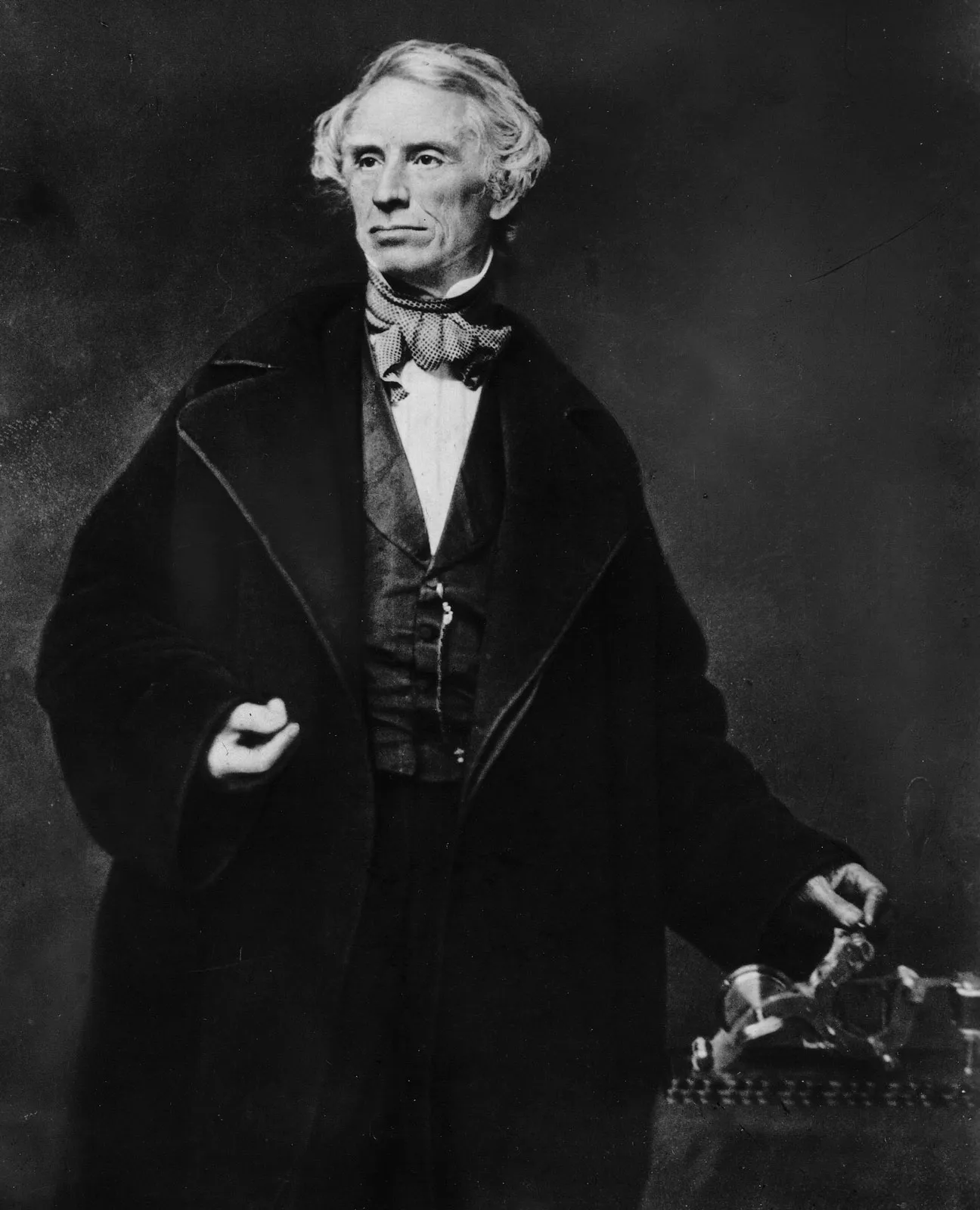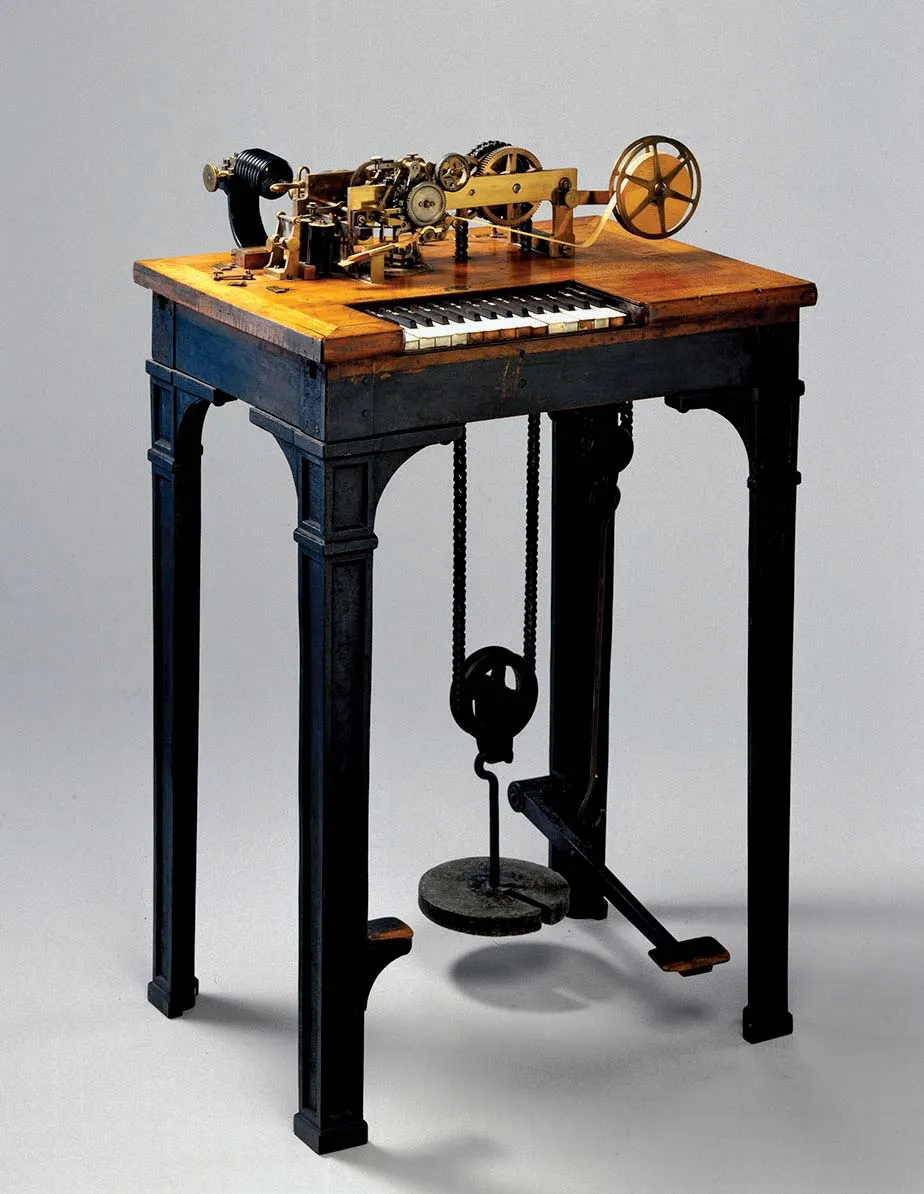The telegraph represents one of the most significant technological advancements of the 19th century, marking a transformative period in global communication. By enabling messages to be transmitted across vast distances almost instantaneously, the telegraph revolutionized how people communicated and laid the groundwork for the development of subsequent technologies such as the telephone, radio, and the internet.

White House Telegraph Room, 1898, (Library of Congress, Washington, D.C. (digital. id. cph.3b37154))
Historical Development
Precursors to the Electrical Telegraph
Before the invention of the electrical telegraph, societies utilized various methods to transmit information over long distances. Early systems included smoke signals, drum beats, and optical telegraphy. Claude Chappe's semaphore system, developed in France in 1792, was among the most notable precursors. This system employed visual signals transmitted between towers equipped with movable arms. Despite its efficiency over short distances, optical telegraphy was limited by weather conditions, visibility, and the physical distance between stations.

Samuel F.B. Morse. (Source)
Invention of the Electrical Telegraph
The modern telegraph system emerged in the early 19th century as advancements in electricity provided new possibilities for communication. Samuel Morse and Alfred Vail developed the first practical electrical telegraph in 1837. Their system used an electric current to send signals through wires, encoding messages in Morse code—a series of dots and dashes representing letters and numbers. In 1844, Morse successfully demonstrated the telegraph with the transmission of the iconic message "What hath God wrought?" between Washington, D.C., and Baltimore.
Global Adoption and Expansion
By the mid-19th century, telegraph networks were expanding rapidly. In the United States, the telegraph played a vital role in connecting the East and West Coasts, while in Europe, countries established extensive networks for domestic and international communication. The completion of the transatlantic telegraph cable in 1866 was a landmark achievement, enabling nearly instantaneous communication between North America and Europe. This global network significantly influenced international diplomacy, commerce, and journalism.

Key-type Morse telegraph transmitter from the 1840s, © Smithsonian Institution
Technical Mechanisms
Principles of Operation
The telegraph operates by sending electrical signals over a conductive wire. A key component of the system is the telegraph key, a device that allows an operator to interrupt the electrical circuit, creating pulses of varying duration. These pulses correspond to dots and dashes in Morse code, which can be interpreted by the receiver.
Key Components
- Transmitter: The telegraph key functions as the transmitter, generating electrical pulses.
- Receiver: Early receivers included devices that produced audible clicks or recorded signals on paper strips. Advances led to the development of sounders, which allowed operators to interpret messages by ear.
- Wires: Conductive wires, often supported by telegraph poles, served as the medium for transmitting electrical signals.
- Relays: In long-distance communication, relays amplify the signals to ensure accurate transmission.
Innovations in Telegraphy
Significant advancements included duplex and quadruplex telegraphy, enabling the simultaneous transmission of multiple messages over a single wire. These innovations improved efficiency and reduced costs, further expanding the telegraph's utility.

Type-printing telegraph designed by David Hughes, manufactured 1860.
Applications and Impact
Military and Strategic Use
The telegraph revolutionized military communication, providing commanders with the ability to issue orders and receive intelligence in near real-time. This capability was critical during conflicts such as the American Civil War and the Crimean War, where telegraph networks were integral to strategic planning.
Economic and Commercial Influence
In commerce, the telegraph facilitated rapid decision-making and coordination, transforming industries such as finance, shipping, and railroads. The transmission of stock market prices and trade information over telegraph lines was a precursor to modern financial systems.
Journalism and Public Information
The telegraph had a profound impact on journalism, enabling the rapid dissemination of news. Organizations like the Associated Press utilized telegraph networks to establish a global news distribution system, transforming the media landscape and creating a more informed public.
Cultural and Historical Legacy
The telegraph’s influence extends beyond its practical applications. It symbolizes the advent of the Information Age and serves as a reminder of humanity’s capacity for innovation. The telegraph inspired literary works, featured prominently in historical narratives, and contributed to a collective sense of global interconnectedness. Its legacy persists in the study of communication technology, where it is often cited as a foundational innovation.
The telegraph stands as a testament to human ingenuity and the transformative power of technology. By bridging vast distances and connecting people in unprecedented ways, it reshaped societies and economies, setting the stage for modern communication systems. Understanding the telegraph’s historical significance and technical mechanisms provides valuable insights into the evolution of global communication.


